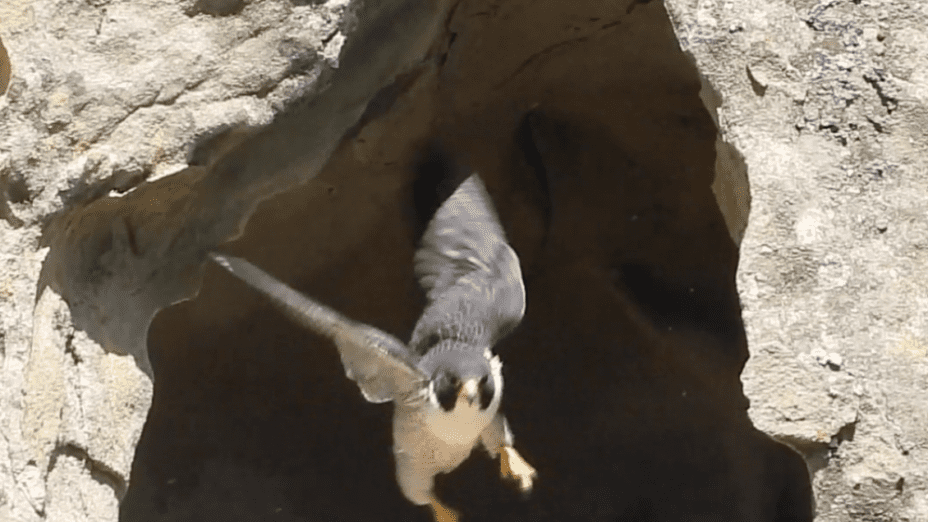
Shooting through the sky at speeds reaching over 200 miles per hour, peregrine falcons, the fastest animals on earth, descend upon their prey in the blink of an eye.
These extraordinary raptors nest at two locations within Mount Diablo State Park: Castle Rock and Knobcone Point. Though they may be mighty hunters, they need our help to complete a successful nesting season.
If people disturb their habitat during certain times of the year, then these falcons won’t have anywhere to nest and breed. To help support their small population, these two parts of the state park are closed every year from February 1 through July 31.
Mount Diablo’s Peregrine Team
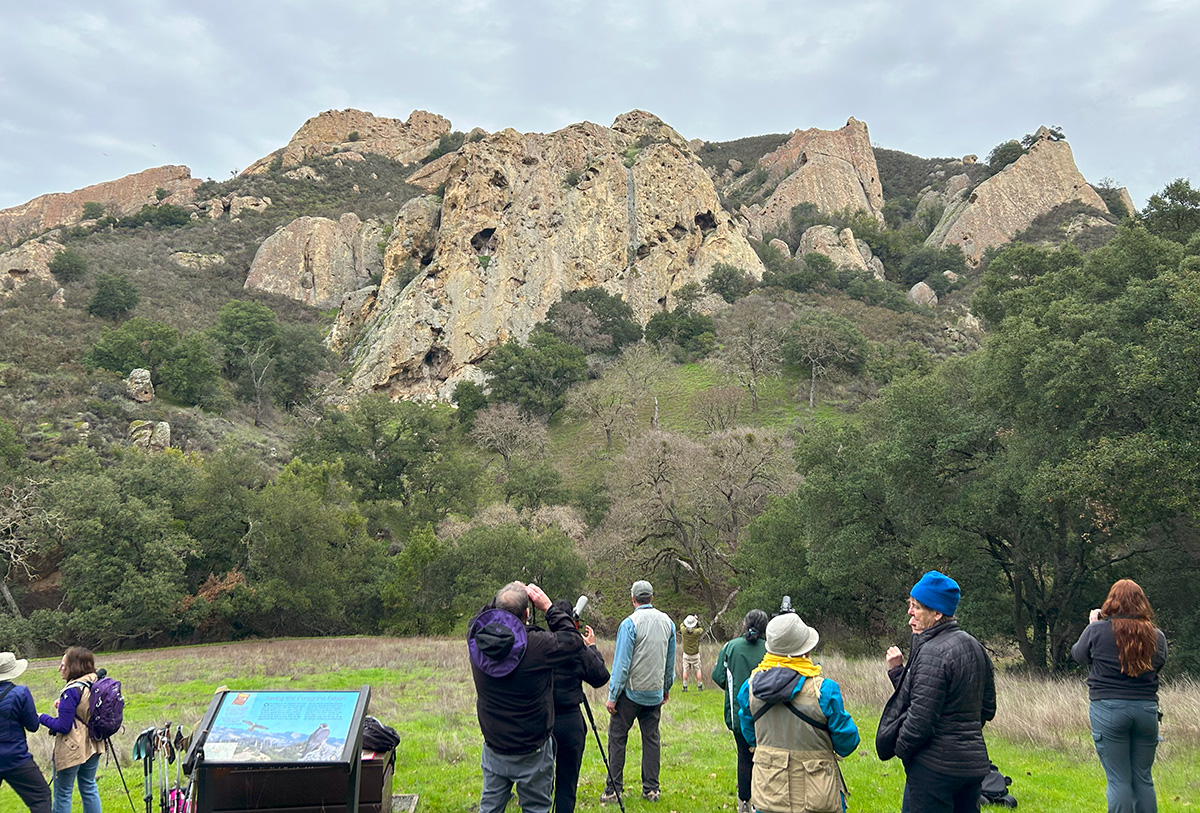
Peregrine Team volunteers watch for peregrine falcons at Castle Rock on training day. Photo by Mary Nagle
When the breeding season begins, the Mount Diablo Interpretive Association Peregrine Team hits the trails to study and protect peregrines at the Castle Rock and Knobcone Point nesting areas.
The Peregrine Team extensively monitors the falcons and gathers vital data used by scientists to understand their needs and well-being.
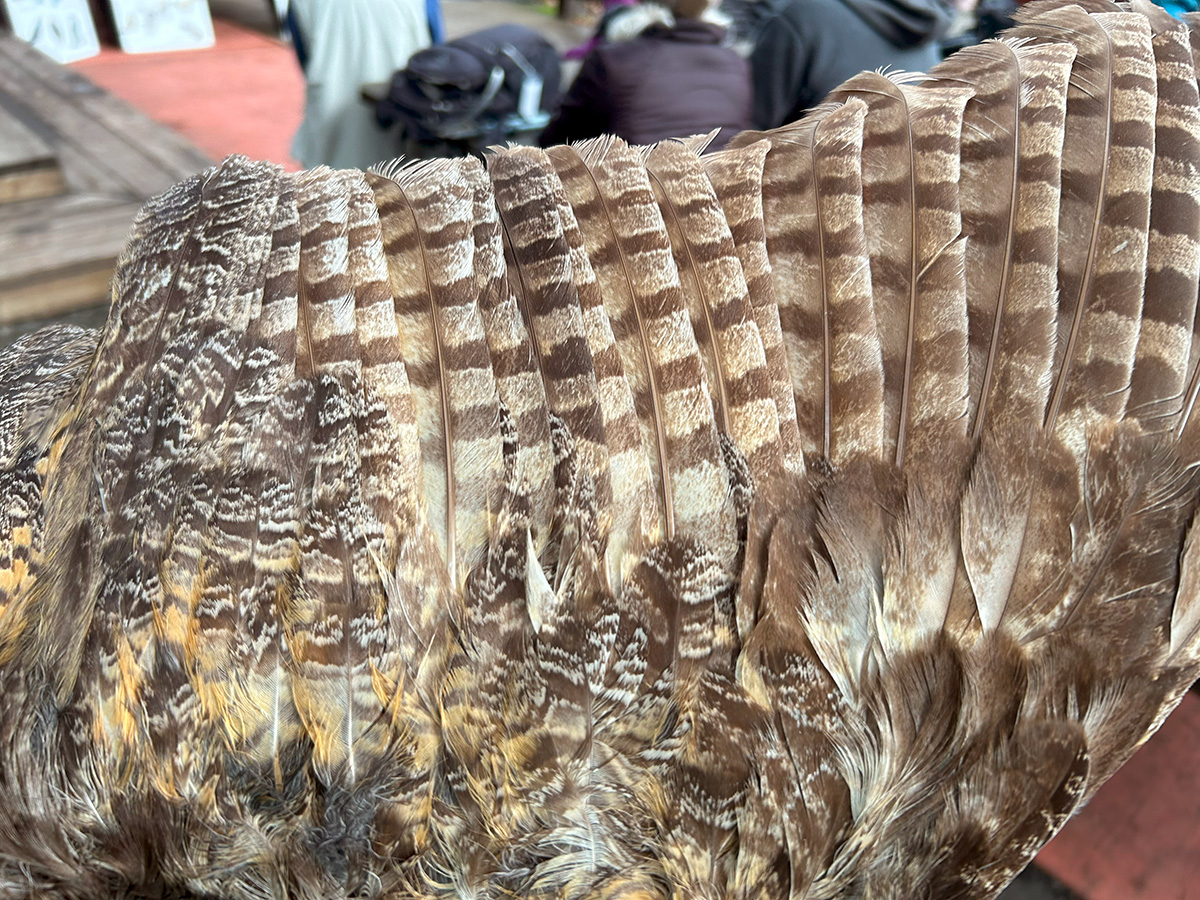
Trainees got an up-close view of this great horned owl wing to better understand the anatomy of different raptors. Peregrines have a very low drag coefficient that helps them fly so fast. Photo by Mary Nagle
Team members also patrol the area and educate park visitors about the peregrines and the reason for the closures.
These dedicated volunteers sit and watch these falcons live out their lives in shifts that can sometimes surpass eight hours at a time.
At the Peregrine Team’s latest volunteer training, new and experienced volunteers enthusiastically prepared for the breeding season. They scoped out potential nesting sites along the nooks and crannies of the expansive Castle Rock formations.
The Peregrine Team hosted its yearly training with talks from the representatives of several organizations.
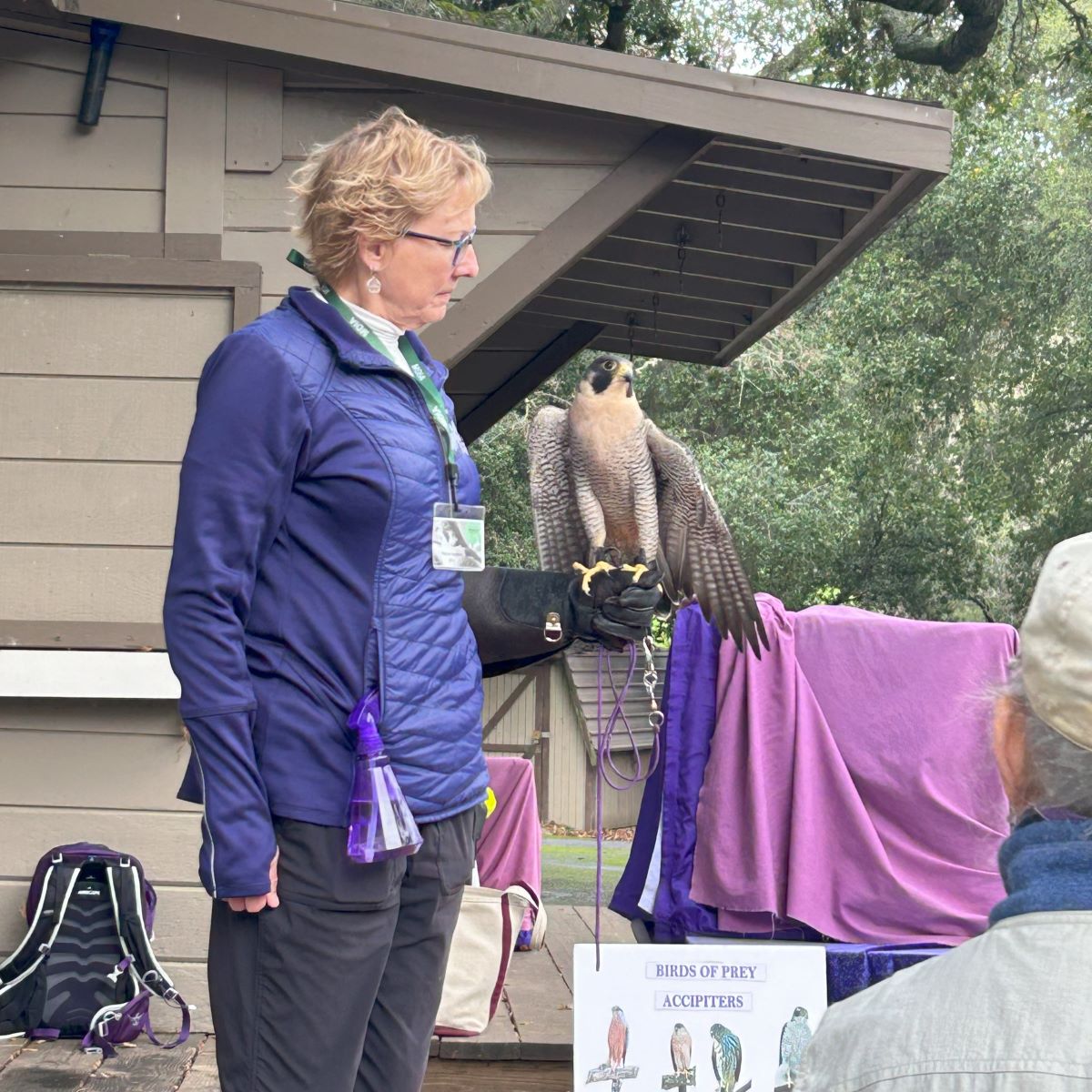
Jenny Papka from Native Bird Connections introduced the audience to one of their non-releasable peregrines. Photo by Mary Nagle
Jenny Papka from Native Bird Connections left the audience in awe with a presentation that included two non-releasable raptors whose species inhabit Mount Diablo: a great-horned owl and a peregrine falcon.
Jenny’s presentation provided everyone with a rare up-close look at two native raptors who are critically important for Mount Diablo’s ecosystem.
Wildlife biologist Joseph Belli, who monitors California condors throughout the Diablo Range, also gave an educational talk about California condors.
It was a particularly exciting and inspiring talk considering the flock of condors that paid Mount Diablo a visit just months ago.
A Triumphant Return
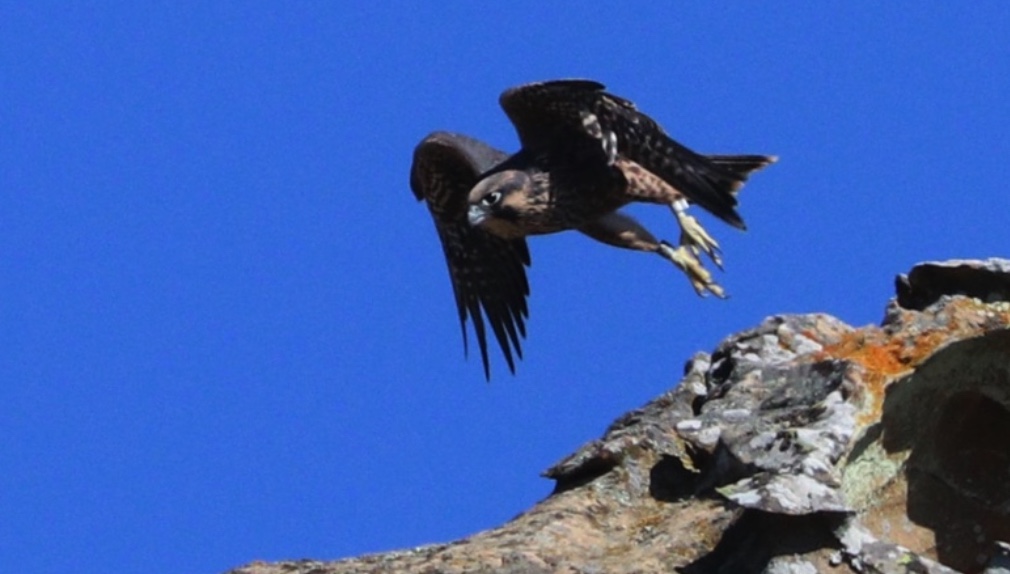
A juvenile peregrine takes flight. Photo by Kendall Oei
At one point in time, peregrines were nearly extinct in the Bay Area, mainly because of DDT, a pesticide. DDT interfered with calcium production causing the peregrine eggshells to become extremely brittle.
By the time DDT was banned in 1972, only two nesting pairs were surviving in California. The peregrines were in trouble.
But thanks to the help of a few passionate conservationists, the falcons have made a dramatic comeback over recent decades.
Beginning in the late 1980s, Save Mount Diablo employee Seth Adams spearheaded the effort to bring these apex predators back to Mount Diablo State Park.
Eventually, thanks to years of work from biologists and volunteers, peregrines were successfully reintroduced and reestablished in the Diablo region.
Today roughly 400 nesting pairs can be found in California! Not too bad for a bird teetering on the brink of extinction just decades ago.
Currently, a different threat to the peregrines comes from the visitors to our parks. Both the peregrines and visitors enjoy Mount Diablo’s scenic cliffs, but the peregrines are territorial and easily disturbed.
If people disrupt this habitat during their breeding season, the falcons may become unable to pay attention to their eggs and chicks.
You can help protect this species by spreading the word about the closures and encouraging park visitors to respect them.
See the MDIA’s website for more information about the Peregrine Team.
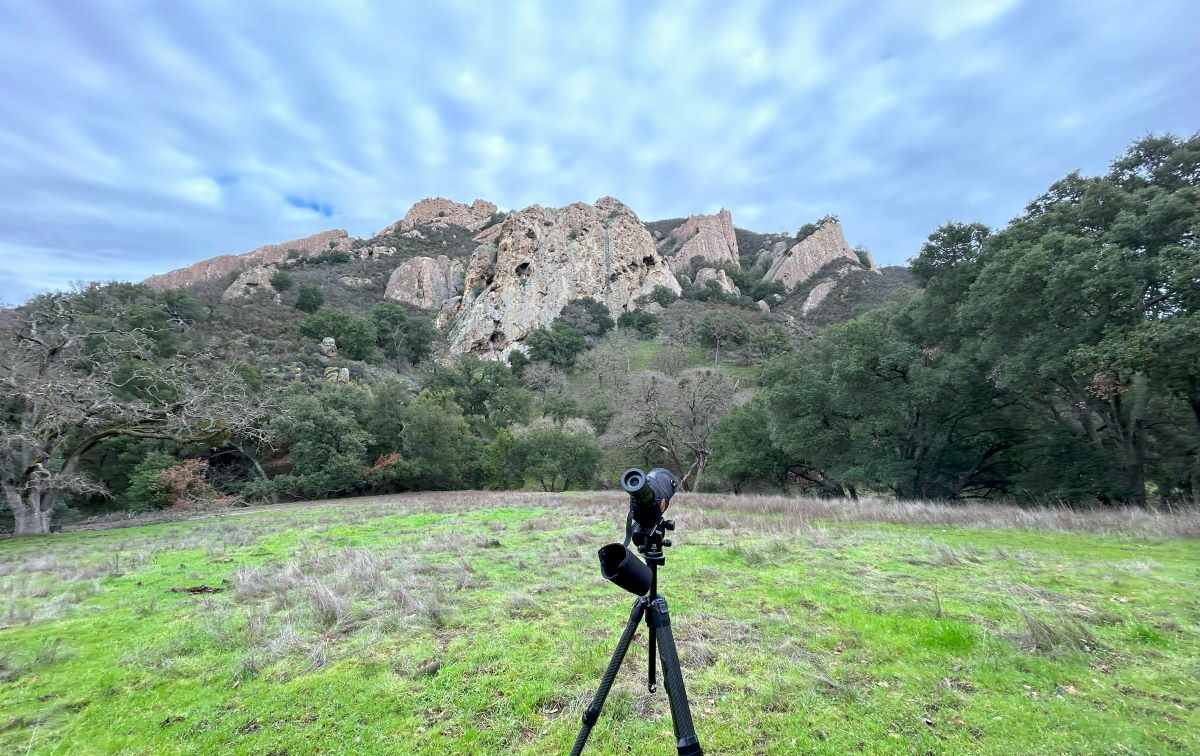
One of the scopes that Peregrine Team volunteers use to watch the peregrines at Castle Rock. Photo by Mary Nagle

